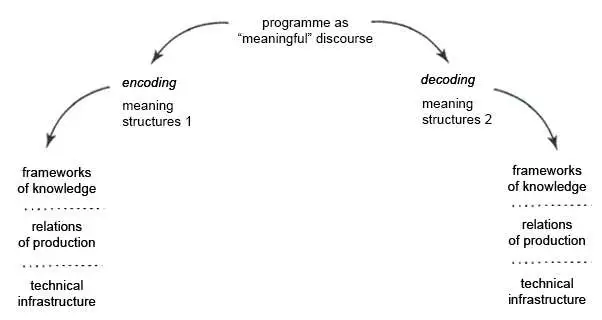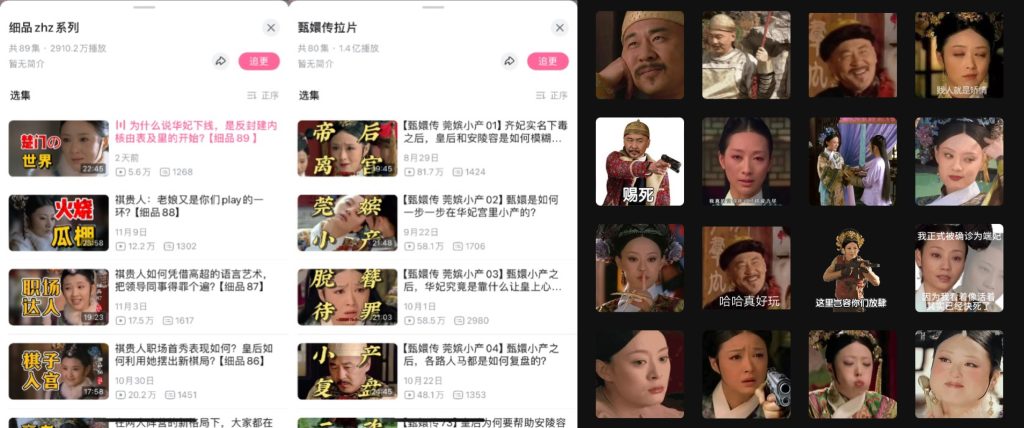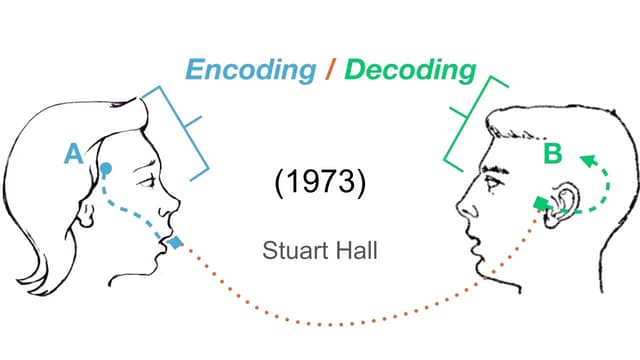ŌĆ£The meanings that are encoded into a text are not always decoded in the same way. Audiences may adopt a preferred, negotiated, or oppositional reading, reflecting their social and cultural backgrounds.ŌĆØ
As a classic Chinese period drama, Empresses in the Palace has garnered widespread attention and affection since its premiere in 2011. In recent years, this representative TV series has gained popularity again on various social platforms in China, but with a different interpretation. I believe that we can analyze these changes using Hall’s encoding and decoding model to understand this phenomenon.

The encoding stage: During the production process, the creative team was influenced by the cultural environment, historical background, and market demand at the time. They may have referenced historical anecdotes from the Qing Dynasty, palace intrigue stories, and incorporated modern audiences’ expectations and aesthetic preferences for palace intrigue dramas. The character personalities, the design of power struggles scenes, etc. were all encoded based on the market’s preference for palace intrigue topics.
In the encoding process, the production team hoped to convey the survival wisdom, complexity of human nature, and brutality of power struggles in the palace by constructing complex power struggles and emotional entanglements.
The decoding process: When it was first broadcast in early 2011, audiences were more focused on the palace intrigue elements and the dramatic plot of the show. At that time, China was experiencing a period of rapid economic development, and audiences were more interested in power struggles, female wisdom, and other surface-level elements. However, as people grew up, in recent years, many bloggers have begun to reinterpret the details of the show on social media platforms, and people have applied these elements to similar scenarios in their daily lives with a comedic twist. In addition, some classic lines and scenes from the show have been remixed into meme-like emoticons and used in various social contexts. This shows that people of the same era but from different backgrounds have very different ways of decoding the same product.

All cultural products, including Empresses in the Palace, will be constantly reinterpreted over time, in response to changes in social context and the audience’s knowledge framework. The creator builds the meaning structure during the encoding stage, but the audience interprets it differently in different decoding stages based on their background and cognition. This diversified interpretation process is a typical representation of the interaction between cultural products and audiences.
References:
https://images.app.goo.gl/9KGAHL1kRk2mcKkh9
https://images.app.goo.gl/GP98rN17izEL2TWWA
Stuart HallŌĆÖs discussion of encoding and decoding in media studies is detailed in his essay ŌĆ£Encoding and Decoding in the Television DiscourseŌĆØ (1973)┬Ā


I like the example of Empresses in the Palace very much, because I have seen this TV before, and the theme of encoding and decoding is very relevant to me. Under different social and cultural backgrounds, people will have different decoding processes and results. Hall’s Stuart encoding and decoding model emphasizes that audience’s ability to interpret is dependent on individual cultural literacy, knowledge reserve and other aspects. This example explains this purpose very well, and I strongly agree with and like it.
Hello! Your blog’s analysis of the changing audience interpretation of Empresses in the palace through Hall’s “coding/decoding model” is very lively and interesting. Here are my expansions and reflections on your point of view, hoping to deepen the discussion.
You mentioned the comedy-defused reading of Empresses in the palace, and I want to expand further: In the digital age, social media platforms are not only mediums for audience interpretation, but also participate in the “coding” process to some extent. In Hall’s model, coding is usually done by creators, but social media algorithms and user behavior are redefining this process. For example, platform algorithms tend to push more interactive or entertaining content, thus reinforcing the comedy-defused reading of lines and scenes in Empresses in the palace. Through user secondary creation and algorithmic push, the serious elements in the episodes are repackaged as pop culture symbols. Short videos about “Empresses in the palace” are often presented in the form of “funny clip collections”, and the number of clicks and comments on these videos also affects the priority recommendation of content by platform algorithms. It can be said that the algorithms of social media have not only become a communication tool, but also become an important player in re-” encoding “the meaning of the text. What kind of impact do you think this phenomenon of platform algorithms participating in coding will have on the original meaning of cultural products? Will it make audiences more inclined to accept the entertaining” comedy version “of” Empresses in the palace “, while ignoring the historical background and complex narrative of the series?
In addition, you mentioned the role of social media in driving changes in interpretation, which made me think about the impact that generative AI technology may have on future decoding. Audiences can use AI to re-create storylines, For example, generating Zhen Huan’s new dialogue through tools such as AI copying voices, placing Zhen Huan in a completely different cultural context. This technology creates a more “open” encoding/decoding environment, but it can also lead to the “deconstruction” of the original meaning of the text. This “re-creation” enhances audience engagement with cultural products, but at the same time obscures the original meaning of the text. Jenkins, H. (2011). argues that digital technology transforms audiences from “passive consumers” to “active creators”, strengthening the audience’s sense of participation.
Reference: Jenkins, H. (2011). Convergence culture. Where old and new media collide. Revista Austral de Ciencias Sociales, 20, 129-133.